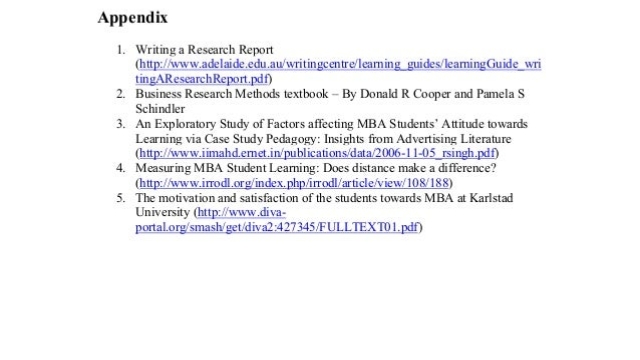Are you ready to embark on the exciting journey of dissertation data analysis? As the culmination of your academic journey, your dissertation holds immense significance. It is the embodiment of countless hours of research, experimentation, and analysis. Now that you have collected an abundance of data, it is time to unlock its secrets and make sense of the information you have gathered.
Dissertation data analysis is a critical step in the research process, as it provides the foundation for drawing meaningful conclusions and bringing your study to fruition. It involves the exploration, interpretation, and synthesis of your data to identify patterns, establish relationships, and answer your research questions or test hypotheses. Through rigorous analysis, you will uncover key insights that contribute to the advancement of knowledge in your field.
One of the first considerations when approaching dissertation data analysis is selecting the most appropriate methodologies and techniques. Depending on the nature of your research and the type of data collected, you may choose to employ qualitative or quantitative analysis methods, or a combination of both. Qualitative analysis allows for a deep exploration of textual or narrative data, uncovering themes, perspectives, and experiences, while quantitative analysis involves the application of statistical tools to analyze numerical data, such as survey responses or experimental results.
To ensure accuracy and reliability, it is crucial to employ robust data analysis software and tools that can handle the complexity of your data. Software packages like SPSS, SAS, or R provide a wide range of statistical analyses and visualizations, aiding you in extracting meaningful insights from your data. However, it is not enough to rely solely on technology; understanding the underlying principles of the chosen data analysis methods is essential for their proper application.
As you delve into dissertation data analysis, it is essential to approach the task with patience, diligence, and a critical mindset. The process may involve cleaning and organizing your data, performing exploratory data analysis, applying appropriate statistical tests, and drawing conclusions within the context of your research questions. Each step requires careful attention to detail and a thorough understanding of the analysis techniques employed.
Cracking the code of dissertation data analysis is a challenge that many researchers face, but with the right mindset and the proper knowledge, it is an achievable feat. By mastering this crucial step, you will not only contribute valuable findings to your field of study but also develop essential skills that will serve you well in your future academic and professional endeavors.
So, get ready to unlock the potential of your data and transform your research into a comprehensive and impactful dissertation. The world is eagerly awaiting the insights and discoveries you will unveil through meticulous dissertation data analysis.
Understanding Dissertation Data Analysis
In order to complete dissertations and capstones successfully, students must have a firm grasp on the process of dissertation data analysis. This is a crucial stage that involves examining and interpreting gathered data to draw meaningful conclusions. By implementing effective data analysis techniques, researchers can shed light on their research questions and contribute to the existing body of knowledge. In this section, we will explore the key aspects of understanding dissertation data analysis.
The first step in dissertation data analysis is to organize and clean the collected data. This involves sorting through the data set, ensuring it is complete and accurate, and removing any inconsistencies or errors. By taking the time to carefully prepare the data, researchers can ensure the integrity and reliability of their analysis.
Once the data is properly organized, researchers can move on to the next phase, which involves selecting appropriate analysis methods. Depending on the nature of the research questions and the type of data collected, researchers may opt for qualitative or quantitative analysis techniques, or a combination of both. Qualitative analysis involves analyzing textual or narrative data, while quantitative analysis focuses on numerical data. Choosing the right analysis method is crucial for obtaining valid and meaningful results.
After selecting the analysis method, researchers can begin the actual process of running the analysis. This typically involves using specialized software or statistical tools to analyze the data and generate findings. During this phase, researchers may apply various statistical tests, conduct regression analyses, or employ other advanced techniques to uncover patterns, relationships, or trends within the data. By carefully examining the findings, researchers can draw conclusions and make informed recommendations based on their analysis.
In summary, dissertation data analysis is a critical component in the research process, allowing researchers to derive insights and make meaningful contributions to their field. By understanding the importance of organizing and cleaning data, selecting appropriate analysis methods, and interpreting the findings, students can master the art of dissertation data analysis and enhance the quality of their research.
Key Methods for Dissertation Data Analysis
When it comes to analyzing data for dissertations and capstones, several key methods can be employed. These methods provide researchers with valuable insights and help uncover meaningful patterns and trends within their data. In this section, we will explore three prominent techniques commonly used for dissertation data analysis.
Descriptive Statistics: Descriptive statistics is a fundamental method used to summarize and describe data. It involves calculating measures such as mean, median, mode, and standard deviation to gain a better understanding of the overall characteristics of the dataset. Descriptive statistics provide researchers with a way to interpret and communicate the main features of their data, helping to paint a clear picture of their findings.
Qualitative Content Analysis: Qualitative content analysis is a valuable approach for analyzing textual data. It involves systematic coding and categorization of qualitative data, such as interview transcripts or written responses. Researchers can identify themes, patterns, and relationships within the data, providing deep insights into participants’ perspectives and experiences. By analyzing the content in a structured and meaningful way, researchers can draw meaningful conclusions from qualitative data sources.
Regression Analysis: Regression analysis is a statistical technique used to examine the relationship between a dependent variable and one or more independent variables. It helps researchers understand how changes in one variable impact another variable. By fitting a regression model to the data, researchers can estimate the strength and direction of the relationships, make predictions, and assess the significance of the variables involved. Regression analysis is particularly useful when trying to understand the influence of specific factors on the outcome of interest.
These three methods, descriptive statistics, qualitative content analysis, and regression analysis, are powerful tools for dissertation data analysis. They enable researchers to dive deep into their data, uncover meaningful insights, and make evidence-based conclusions. By employing these techniques strategically, researchers can master the art of dissertation data analysis and contribute valuable knowledge to their respective fields.
Dissertation Writing Help
Best Practices for Successful Dissertation Data Analysis
To ensure successful dissertation data analysis, it is crucial to follow a set of best practices. By implementing these strategies, researchers can effectively analyze their data and derive meaningful insights. Here are three key recommendations to consider:
Establish clear research objectives: Before delving into data analysis, it is important to have well-defined research objectives. Clearly identify the research questions or hypotheses you seek to answer, as this will guide your data analysis approach. By having a clear focus, you can ensure that your analysis is aligned with your research goals, making the process more efficient and effective.
Choose appropriate data analysis methods: With numerous data analysis methods available, selecting the right approach is vital. Consider the nature of your data, research objectives, and the specific research questions you are addressing. Whether you are using qualitative or quantitative methods, ensure that your chosen analytical techniques are appropriate and capable of addressing your research objectives. This will help to ensure the validity and reliability of your findings.
Thoroughly clean and organize your data: Data cleanliness and organization are crucial for productive analysis. Start by critically examining your dataset for missing values, outliers, or any other data quality issues that may impact your findings. Address these issues through data cleaning procedures, such as imputation or removal of incomplete or inaccurate data. Additionally, organize your data in a manner that facilitates analysis, ensuring proper labeling and categorization of variables.

Adhering to these best practices will contribute to a more effective and comprehensive dissertation data analysis. By establishing clear research objectives, choosing appropriate methods, and ensuring data cleanliness and organization, researchers can navigate the complexities of data analysis with confidence, enabling them to produce valuable insights for their dissertations or capstone projects.


